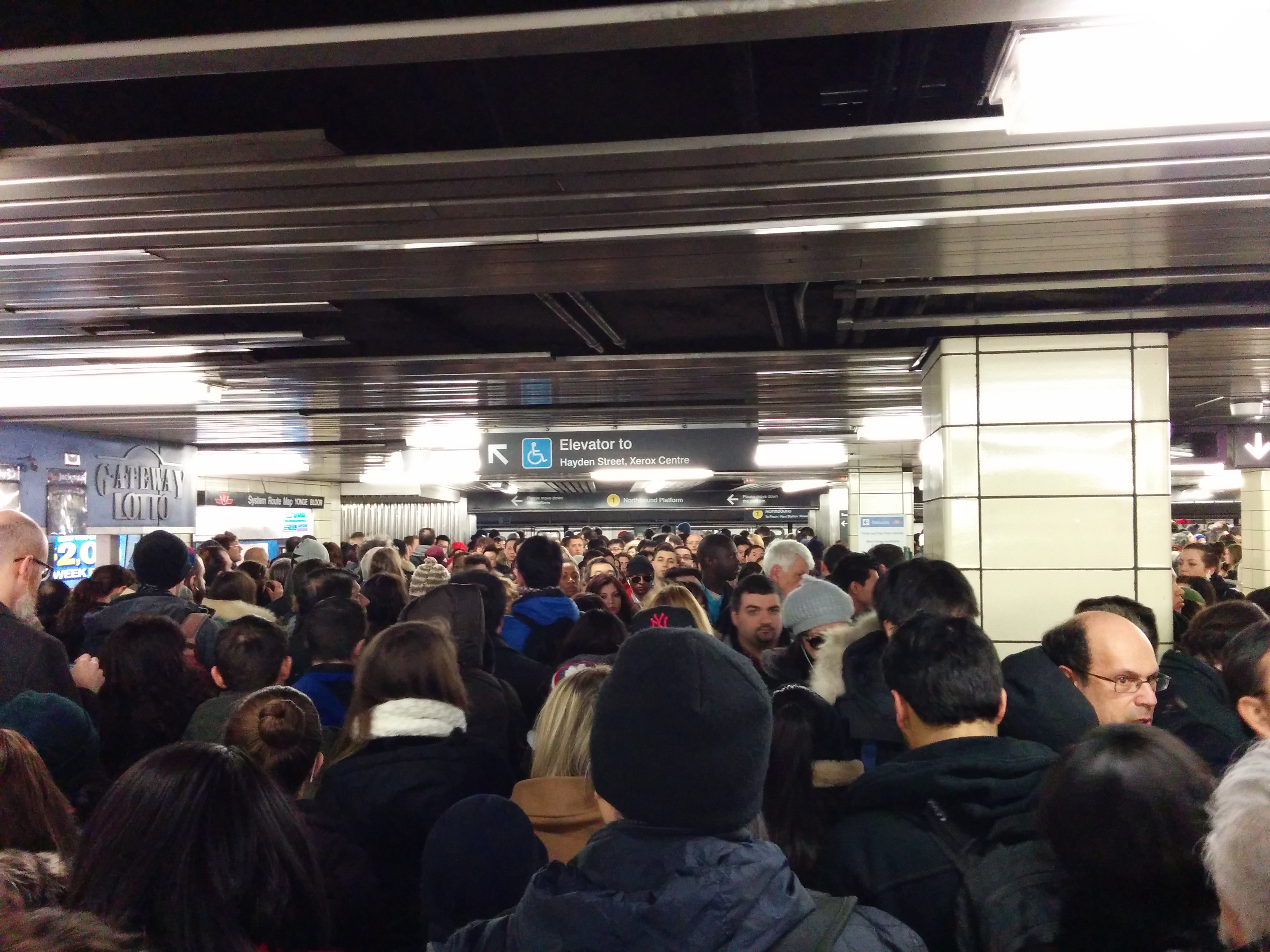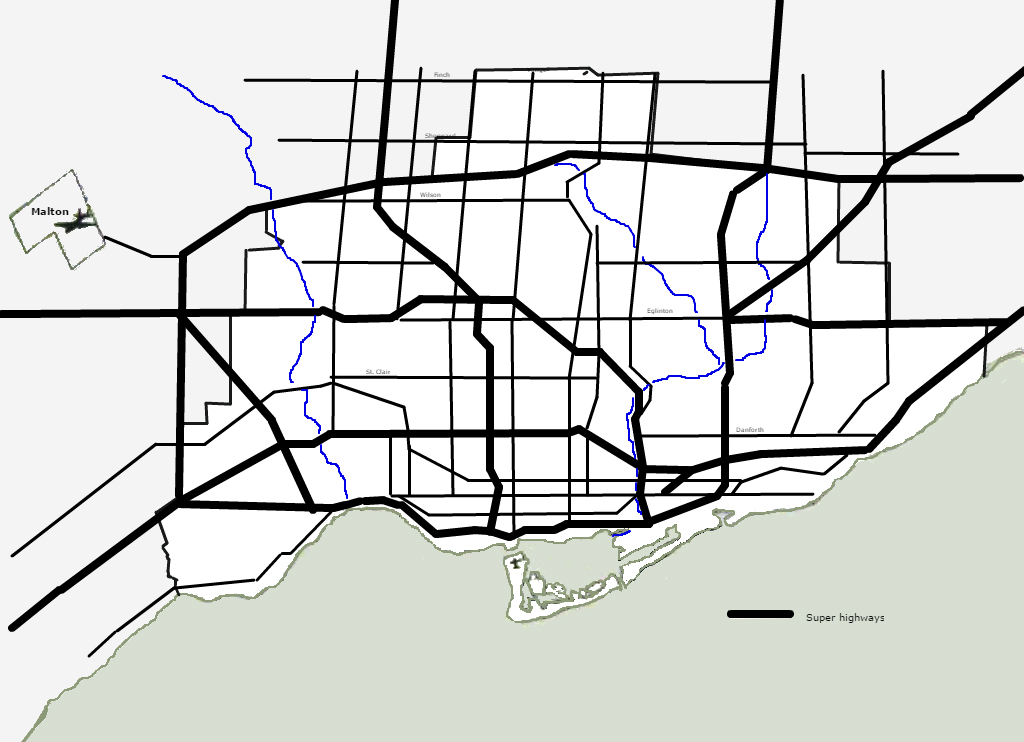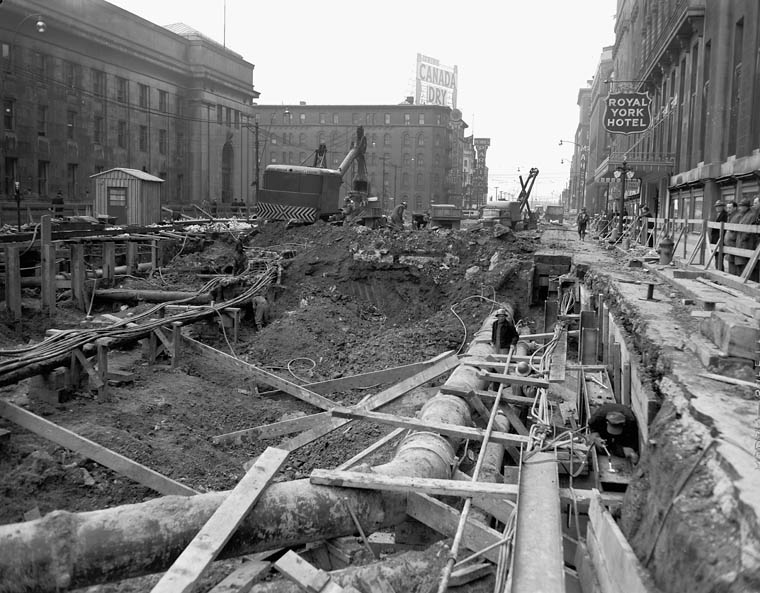|
Smart Track
SmartTrack is a municipal proposal to enhance GO Transit rail service within Toronto, Ontario, Canada. It takes advantage of the province's existing GO Transit Regional Express Rail plans. SmartTrack has evolved since it was originally proposed by Toronto mayor John Tory as the centrepiece of his 2014 mayoral election campaign. Originally, SmartTrack was to be a new rapid transit service with 22 stations (of which 14 would be new) along the inner portions of the Kitchener, Lakeshore East and Stouffville GO commuter train corridors. As of 2021, SmartTrack is a proposal to construct five new GO stations along the existing Kitchener, Lakeshore East, Stouffville and Barrie services. Original proposal SmartTrack was first proposed during John Tory's 2014 campaign for mayor. It had been changed with proposals made by city staff after Tory assumed office. The SmartTrack line as proposed would be long and run along Eglinton Avenue from Matheson/Airport Corporate Centre in Mis ... [...More Info...] [...Related Items...] OR: [Wikipedia] [Google] [Baidu] |
Commuter Rail
Commuter rail, or suburban rail, is a passenger rail transport service that primarily operates within a metropolitan area, connecting commuters to a central city from adjacent suburbs or commuter towns. Generally commuter rail systems are considered heavy rail, using electrified or diesel trains. Distance charges or zone pricing may be used. The term can refer to systems with a wide variety of different features and service frequencies, but is often used in contrast to rapid transit or light rail. Similar non-English terms include ''Treno suburbano'' in Italian, '' Cercanías'' in Spanish, Aldiriak in Basque, Rodalia in Catalan/Valencian, Proximidades in Galician, '' Proastiakos'' in Greek, ''Train de banlieue'' in French, '' Banliyö treni '' in Turkish, ''Příměstský vlak'' or ''Esko'' in Czech, '' Elektrichka'' in Russian, ''Pociąg podmiejski '' in Polish and ''Pendeltåg'' in Swedish. Some services share similarities with both commuter rail and high-frequency ... [...More Info...] [...Related Items...] OR: [Wikipedia] [Google] [Baidu] |
Union Station (Toronto)
Union Station is a major railway station and intermodal transportation hub in Toronto, Ontario, Canada. It is located on Front Street West, on the south side of the block bounded by Bay Street and York Street in downtown Toronto. The municipal government of Toronto owns the station building while the provincial transit agency Metrolinx owns the train shed and trackage. Union Station has been a National Historic Site of Canada since 1975, and a Heritage Railway Station since 1989. It is operated by the Toronto Terminals Railway, a joint venture of the Canadian National Railway and Canadian Pacific Railway that directs and controls train movement along the Union Station Rail Corridor, the largest and busiest rail corridor in Canada. Its central position in Canada's busiest inter-city rail service area, " The Corridor", as well as being the central hub of GO Transit's commuter rail service, makes Union Station Canada's busiest transportation facility and the third-busiest r ... [...More Info...] [...Related Items...] OR: [Wikipedia] [Google] [Baidu] |
Relief Line (Toronto)
The Relief Line (formerly the Downtown Relief Line or DRL) was a proposed rapid transit line for the Toronto subway system, intended to provide capacity relief to the Yonge segment of Line 1 and Bloor–Yonge station and extend subway service coverage in the city's east end. Several plans for an east–west downtown subway line date back to the early 20th century, most of which ran along Queen Street. Since the early 21st century, studies proposed a line that would run south from Line 2 Bloor–Danforth at a point east of the Don River, before bending westward along Queen Street into Downtown Toronto. The Relief Line was included in the regional transportation plan ''The Big Move'' and is one of Metrolinx's top 15 transit priorities. In August 2018, an alignment was approved by the Ontario Ministry of Environment, Conservation, and Parks. In April 2019, the Government of Ontario under Premier Doug Ford announced that the Ontario Line, a provincially funded, automated rapid tra ... [...More Info...] [...Related Items...] OR: [Wikipedia] [Google] [Baidu] |
Cancelled Expressways In Toronto
The cancelled expressways in Toronto were a planned series of expressways in Toronto, Ontario, Canada that were only partially built or cancelled due to public opposition. The system of expressways was intended to spur or handle growth in the suburbs of Toronto, but were opposed by citizens within the city of Toronto proper, citing the demolition of homes and park lands, air pollution, noise and the high cost of construction. The Spadina Expressway, planned since the 1940s, was cancelled in 1971 after being only partially constructed. After the Spadina cancellation, other expressway plans, intended to create a 'ring' around the central core, were abandoned. History By the 1940s, urban development extended past the city of Toronto's borders. It was recognized within the planning department of the city that population growth would take place and that the farmlands outside of the city's border would be developed. In 1943, the City of Toronto Planning Board developed a plan for the ... [...More Info...] [...Related Items...] OR: [Wikipedia] [Google] [Baidu] |
CityPlace, Toronto
CityPlace is a neighbourhood in Downtown Toronto, Ontario, Canada, within the former Railway Lands. When completed, this area will be the largest residential development ever created in Toronto. The area is bordered by Bathurst Street to the west, Lake Shore Boulevard to the south, and Front Street to the north and Blue Jays Way and Rogers Centre to the east. Cityplace is also a 5- to 10-minute walk from King Street West and Liberty Village and a 10- to 20-minute walk from Toronto's financial district. The neighbourhood is also home to the Canoe Landing Park designed by famed Canadian writer and artist Douglas Coupland. History Early history What is now CityPlace was originally conceived as a way to revitalize what was Canadian National's former Spadina Street Yard Facility, which was part of the extensive Railway Lands in the waterfront area. Going as far back as 1965, when CN began to shift the functions of many of its yards in the Greater Toronto Area to a centralized f ... [...More Info...] [...Related Items...] OR: [Wikipedia] [Google] [Baidu] |
Liberty Village
Liberty Village is a neighbourhood in Toronto, Ontario, Canada. It is bordered to the north by King Street West, to the west by Dufferin Street, to the south by the Gardiner Expressway, to the east by Strachan Avenue, and to the northeast by the CP railway tracks. History In the 1850s, both the Toronto, Grey and Bruce Railway and the Great Western Railway laid tracks across the community, cutting it off from rest of the city and altering plans to develop the area for residential purposes. Instead, Liberty Village became home to several institutions, including the Toronto Central Prison, opened in 1873, and the Andrew Mercer Reformatory for Women (on the site of today's Lamport Stadium), opened in 1878 for women convicted of "vagrancy", "incorrigibility", or "sexual precociousness." Provincial Secretary William John Hanna forced the closure of Central Prison in 1915, and all its buildings were demolished except for the paint shop and chapel. "Liberty Street", for which Liber ... [...More Info...] [...Related Items...] OR: [Wikipedia] [Google] [Baidu] |
Bloor–Yonge Station
Bloor–Yonge is a subway station on Line 1 Yonge–University and Line 2 Bloor–Danforth in Toronto, Ontario, Canada. Located in Downtown Toronto, under the intersection of Yonge Street and Bloor Street, it is the busiest subway station in the system, handling over 200,000 passengers on an average weekday. Wi-Fi is available at this station. History The station was opened in 1954 and designed by Charles B. Dolphin. It was originally named "Bloor", and connected with a pair of enclosed platforms in the centre of Bloor Street to allow interchange with Bloor streetcars within the fare-paid zone. When the streetcars were replaced with the Bloor-Danforth subway in 1966, the station began to be shown on maps as "Bloor–Yonge". However, actual platform signs still show "Bloor" on the Yonge–University line and "Yonge" on the Bloor–Danforth line, following a naming style common in New York subway station complexes, where only the platform's cross street is shown on the platform s ... [...More Info...] [...Related Items...] OR: [Wikipedia] [Google] [Baidu] |
Toronto City Council
Toronto City Council is the governing body of the municipal government of Toronto, Ontario. Meeting at Toronto City Hall, it comprises 25 city councillors and the mayor of Toronto. The current term began on November 15, 2022. Structure The current decision-making framework and committee structure at the City of Toronto was established by the '' City of Toronto Act, 2006'' and came into force January 1, 2007. The decision-making process at the City of Toronto involves committees that report to City Council. Committees propose, review and debate policies and recommendations before their arrival at City Council for debate. Citizens and residents can only make deputations on policy at committees, citizens cannot make public presentations to City Council. The mayor is a member of all committees and is entitled to one vote. There are three types of committees at the City of Toronto: the Executive Committee, four other standing committees, and special committees of council. Executi ... [...More Info...] [...Related Items...] OR: [Wikipedia] [Google] [Baidu] |
Line 5 Eglinton
Line 5 Eglinton (also known as the Eglinton Crosstown or the Crosstown) is a light rail line that is under construction in Toronto, Ontario, Canada. Owned by Metrolinx and operated by the Toronto Transit Commission (TTC), the line will be part of the Toronto subway system as its fifth route. The first phase of the line will include 25 stops along Eglinton Avenue, from Mount Dennis station underground to station, after which it will run predominantly at-grade within the street's median to Kennedy station, where it will connect underground with Line 2 Bloor–Danforth and Line 3 Scarborough. The line was conceived in 2007 during the administration of Toronto mayor David Miller as part of Transit City, a large-scale transit expansion plan. Construction of the first phase of the line began in 2011 and was originally expected to be completed in 2020; it has been delayed more than once, and as of November 2021, Metrolinx and Crosslinx (the construction consortium) agreed on an ... [...More Info...] [...Related Items...] OR: [Wikipedia] [Google] [Baidu] |
Line 2 Bloor–Danforth
Line 2 Bloor–Danforth is a subway line in the Toronto subway system, operated by the Toronto Transit Commission (TTC). It has 31 stations and is in length. It opened on February 26, 1966, and extensions at both ends were completed in 1968 and again in 1980. The line runs primarily a few metres north of Bloor Street from its western terminus at Kipling Avenue with a direct connection to the Kipling GO Station to the Prince Edward Viaduct east of Castle Frank Road, after which the street continues as Danforth Avenue and the line continues running a few metres north of Danforth Avenue until just east of Main Street, where it bends northeasterly and runs above-grade until just east of Warden station, where it continues underground to its eastern terminus, slightly east of Kennedy Road on Eglinton Avenue, which has a direct connection to the Kennedy GO Station. The subway line is closed nightly for maintenance, during which Blue Night Network bus routes provide service alon ... [...More Info...] [...Related Items...] OR: [Wikipedia] [Google] [Baidu] |
Line 1 Yonge–University
Line 1 Yonge–University is a rapid transit line on the Toronto subway. It serves Toronto and the neighbouring city of Vaughan in Ontario, Canada. It is operated by the Toronto Transit Commission, has 38 stations and is in length, making it the longest line on the subway system. It opened as the "Yonge subway" in 1954 as Canada's first underground passenger rail line, and was extended multiple times between 1963 and 2017. Averaging over 790,000 riders per weekday, Line 1 is the busiest rapid transit line in Canada, and one of the busiest lines in North America. Route description The line forms a rough 'U' shape, with two portions running generally north–south that meet at in the southern part of the city's downtown, and then gradually spreading farther apart as they proceed northward. From Union station, the eastern portion of the line runs straight under or nearby Yonge Street, sometimes in an uncovered trench, for to its northeastern terminus at Finch Avenue, connecting ... [...More Info...] [...Related Items...] OR: [Wikipedia] [Google] [Baidu] |
Union Pearson Express
The Union Pearson Express (UP Express or UPX) is an airport rail link connecting Union Station (Toronto), Union Station in Downtown Toronto to Toronto Pearson International Airport. The UP Express began operation on 6 June 2015, in time for the 2015 Pan American Games. The UP Express travels between Union and Pearson in 25 minutes departing every 30 minutes, seven days a week. At the launch announcement, it was stated that the UP Express was projected to carry 2.35million passengers annually and eliminate approximately 1.2million car trips in the first year. UP Express is operated as an independent division of Metrolinx, similarly to GO Transit. An airport rail link was one of the priority projects identified in Metrolinx's regional transportation plan, "The Big Move". Construction began in 2011 as part of the Kitchener line#Georgetown South expansion, Georgetown South Project, which expanded the rail corridor the UP Express shares with GO Transit and Via Rail. UP Express uses d ... [...More Info...] [...Related Items...] OR: [Wikipedia] [Google] [Baidu] |








